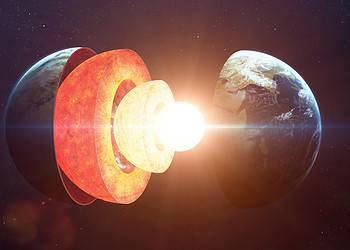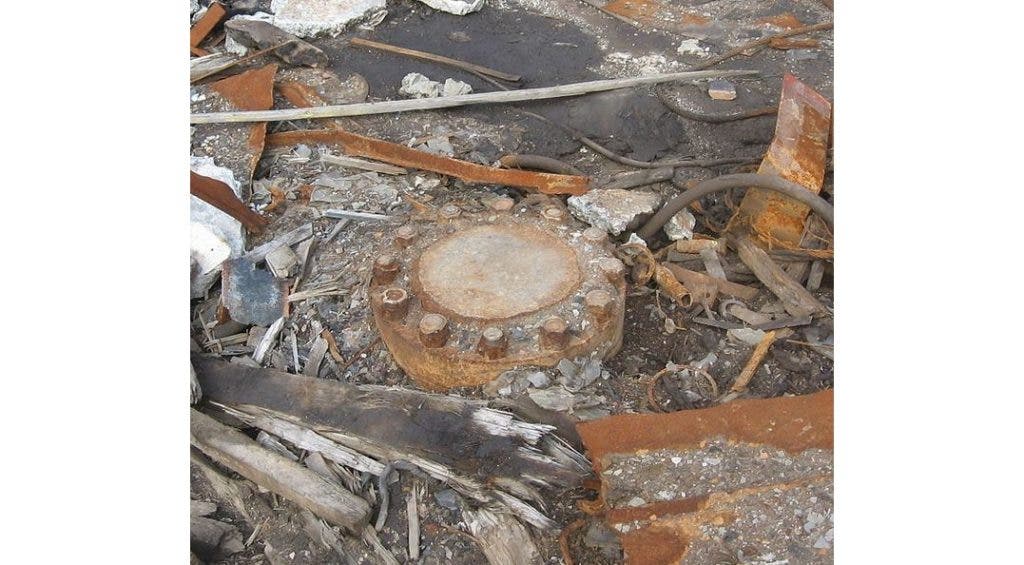The lithosphere is the rigid, outermost, rocky shell of the Earth. It is composed of the crust and the top part of the mantle, called the lithospheric mantle. This extends around 40 to 280 kilometers down (25 to 170 miles) down.
The Earth consists of an outer crust, a mantle, and a core — so then what is the lithosphere? Well, the crust-mantle-core classification isn’t the only way of looking at things. Sometimes, geologists use a different classification.

The word lithosphere comes from Ancient Greek, with lithos meaning ‘rocky’ and sphaira meaning ‘sphere’. Therefore, the litosphere is the rocky sphere around the Earth. Other planets have a lithosphere too.
“We’ve identified a previously unrecognized pattern of tectonic deformation on Venus, one that is driven by interior motion just like on Earth,” says Paul Byrne, associate professor of planetary science at North Carolina State University and lead co-author of a recent study on Venus’ lithosphere. “Although different from the tectonics we currently see on Earth, it is still evidence of interior motion being expressed at the planet’s surface.”
But in this one, we’ll focus on the Earth’s lithosphere.
What is the Lithosphere actually?
If you were to define the lithosphere simply, you’d probably say it is like Earth’s protective coat. It’s the rigid, outermost layer that shields our planet. Imagine an egg; the shell represents the lithosphere while the insides represent the inner layers of the Earth.
If you want to get more into the geology of it, you may have a question. Why do we use the different classifications with crust and lithosphere in the first place?
Well, the crust is rigid, and the top part of the mantle is also rigid; these two make up the lithosphere. But the two are different chemically. They consist of different minerals and chemical elements. They behave similarly but are made of different things.
So in one sense, they can be taken together, but in another, they cannot. That’s why sometimes, we talk about crust, and other times, we talk about lithosphere.
But what lies beneath the lithosphere?
Lithosphere and Asthenosphere: A Dynamic Duo
The layer beneath the lithosphere, which contains the mid and lower parts of the mantle is called the asthenosphere.
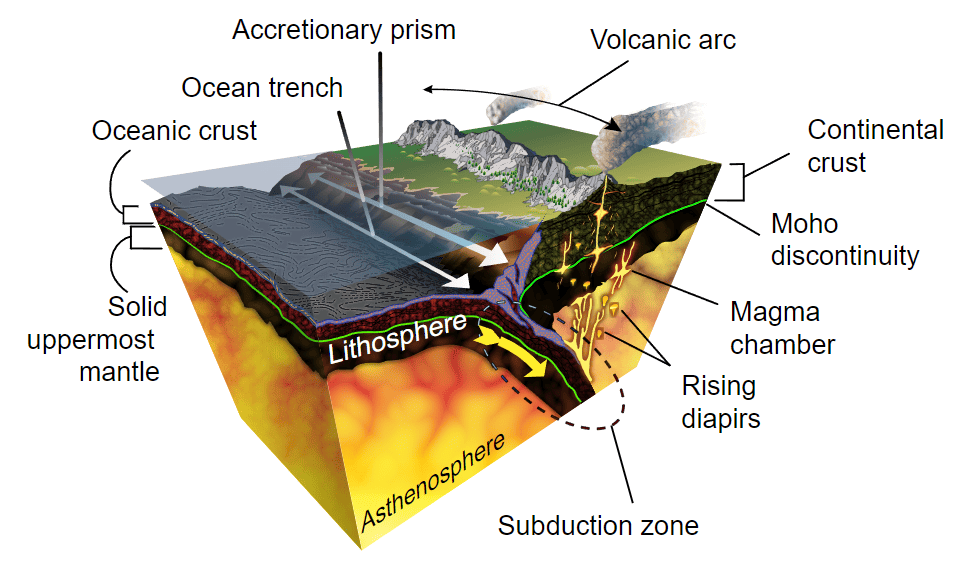
Temperature increases with depth. The deeper you go, the hotter the rocks are. In the mantle, the temperature is so high that rocks would melt if they were at the surface — but the pressure keeps them solid. However, they become plastic, which means that in longer periods of time, they can flow.
While the lithosphere remains rigid and steadfast, the asthenosphere flows and moves, much like a thick, slow-moving liquid. The asthenosphere is also full of convection currents that drive the Earth’s tectonic plates. In fact, the lithosphere and the asthenosphere are essential for plate tectonics, the process that drives and moves tectonic plates on Earth. The rigid tectonic plates (part of the lithosphere) move on the plastic asthenosphere.
The lithosphere and asthenosphere also play a significant role in creating mountains, earthquakes, and volcanic eruptions. The lithosphere, on its journey, floats on the asthenosphere, resulting in the continents and ocean floors shifting, colliding, and interacting in many different ways.
Basically, everything we see on the surface of the planet was created through the work of the lithosphere.
The types of lithosphere
There are two main types of lithosphere: oceanic lithosphere and continental lithosphere. As the name implies, oceanic lithosphere generally lies under oceans, and continental lithosphere under continents.
In order for these plates to get formed in the first place, you needed some pretty specific conditions.
“Three conditions must have been met for the mantle plume to start first long-lived subduction and Plate Tectonics on Earth”, says Stephan Sobolev, Professor of Geodynamics at the University of Potsdam.
“First, the mantle plume had to be large and hot enough to produce a lot of melt. These melts intruded into the lithosphere above the plume making it mechanically weak and allowing the plume to penetrate into the crust. Second, the lithosphere had to be thick and heavy enough to sink into the mantle”.
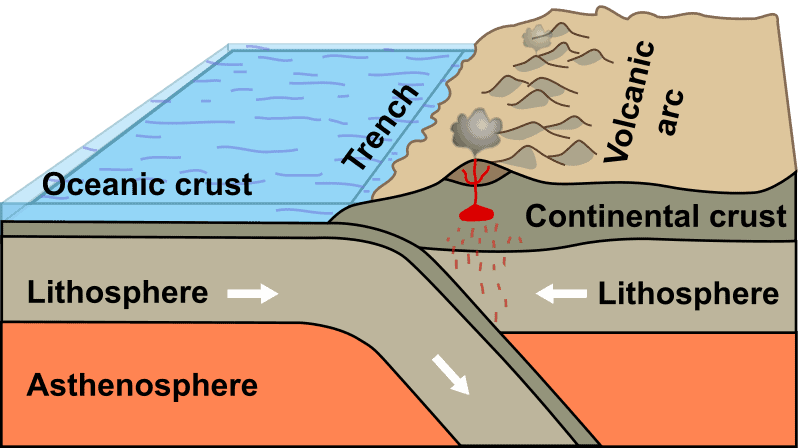
Oceanic Lithosphere: Depths Unknown
The oceanic lithosphere is denser than its continental counterpart, as it is primarily made of basaltic rocks. As it ages and moves away from mid-ocean ridges, it becomes cooler and can sink into the asthenosphere.
Unlike the continental lithosphere, which can be very old and thick (up to 200 km or more), the oceanic lithosphere is generally younger and thinner, typically ranging from 7 km to about 100 km in thickness.
The oceanic lithosphere is primarily formed at mid-ocean ridges, where tectonic plates are pulling away from each other. As the plates separate, magma from the underlying asthenosphere rises to the surface, solidifies, and forms new oceanic crust. This newly formed crust then becomes part of the growing oceanic lithosphere.

The oceanic lithosphere plays a critical role in the theory of plate tectonics. Its formation, movement, and interaction with other types of lithosphere (such as continental lithosphere) are responsible for many geological phenomena, including earthquakes, volcanic activity, and the creation of mountain ranges.
Main characteristics of oceanic lithosphere:
- Density: It is denser than continental lithosphere due to its composition of mainly basaltic rocks.
- Age: Oceanic lithosphere is generally younger than continental lithosphere.
- Subduction: Because of its higher density, oceanic lithosphere is often subducted beneath continental lithosphere at convergent plate boundaries. This process is part of the Earth’s recycling mechanism, as the subducted material melts and may resurface as magma.
- Heat Flow: The oceanic lithosphere cools as it moves away from the mid-ocean ridge, becoming thicker and denser. This cooling is a critical part of plate tectonics and drives the movement of tectonic plates.
- Seafloor Spreading: The mechanism by which new oceanic lithosphere is created at mid-ocean ridges and moves away from the ridge is called seafloor spreading.
Continental Lithosphere: Land’s Legacy
Now, pivot from the deep blue sea to vast terrains and towering mountains. That’s where the continental lithosphere comes into play. Unlike the oceanic counterpart, this lithosphere consists mainly of granitic rocks and is much thicker.
The continental lithosphere is the portion of Earth’s rigid outer layer that makes up the continents and their immediate offshore regions. It is distinct from the oceanic lithosphere, which forms the floors of ocean basins. The continental lithosphere consists of two main layers: the crust and the uppermost portion of the mantle.
The edges of the continental lithosphere can coincide with tectonic plate boundaries, which can be convergent (coming together), divergent (pulling apart), or transform (sliding past each other).
When continental lithospheres collide, they can create mountain ranges like the Himalayas or the Alps. Stable interior regions of continents, known as cratons, often contain ancient rocks and may be covered by sedimentary basins or exposed as a shield.
Why is this significant? Every mountain you’ve climbed, every valley you’ve trekked, owes its existence to the subtle and not-so-subtle movements of this lithosphere. Driven by the asthenosphere’s currents, the continental lithosphere tells a tale of Earth’s past, present, and future.
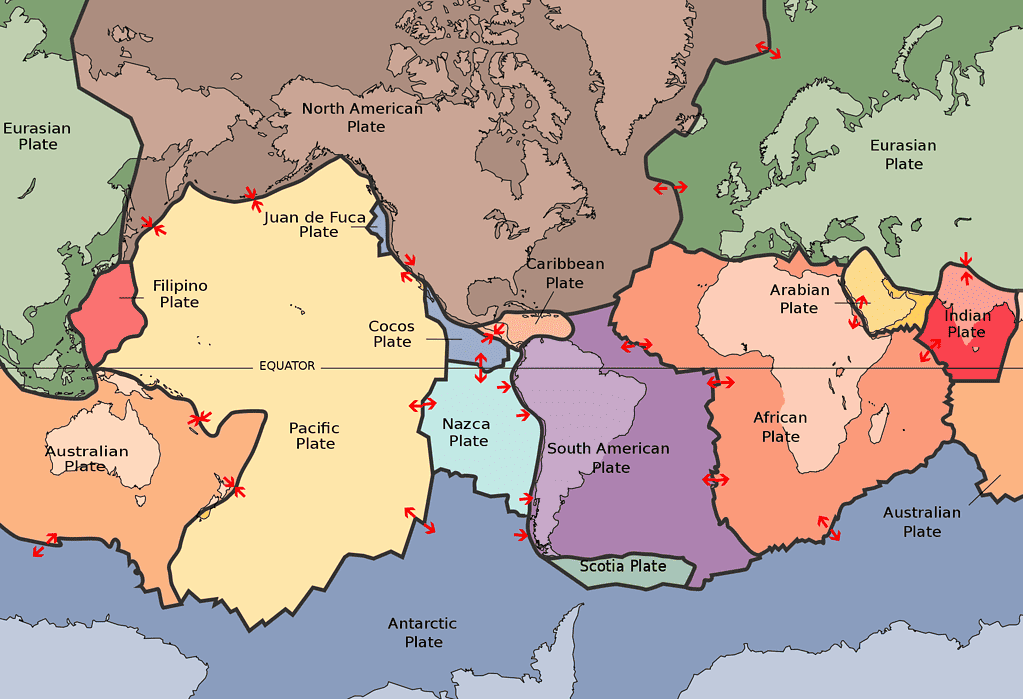
The Hidden Connection: Asthenosphere’s Role
But, let’s get back to our unsung hero: the asthenosphere. This semi-fluid layer plays a pivotal role in shaping the lithosphere. The asthenosphere, with its capability to flow, pushes and pulls the tectonic plates, often leading to significant geological events.
Next time you hear about an earthquake or witness the fiery eruption of a volcano, think of the asthenosphere. It’s this layer that plays the maestro, directing the symphony of Earth’s ever-changing face.
The Lithosphere’s Importance
One might wonder, “So, we’ve got the lithosphere and the asthenosphere. But why should we care?” Besides shaping the physical landscape, the lithosphere holds critical resources. Minerals, fossil fuels, and groundwater, vital to our civilization’s survival, all reside within this layer.
Every sip of water, the fuel that powers your vehicle, and even the jewelry adorning your wrist can trace its origins back to the lithosphere.
The lithosphere is a crucial component of Earth’s system for several reasons, serving as the stage upon which many geological, biological, and climatic processes occur. Its importance spans multiple aspects:
- Habitat: The lithosphere provides the physical foundation for almost all terrestrial ecosystems. Plants root into the soil, animals walk or burrow through it, and humans build structures upon it.
- Nutrient Cycling: Minerals and nutrients within the lithosphere are essential for plant growth, which in turn supports animal life and entire ecosystems.
- Plate Tectonics: The lithosphere is divided into tectonic plates whose interactions shape Earth’s geography, spawn mountain ranges, create ocean basins, and lead to natural phenomena like earthquakes and volcanic eruptions.
- Minerals and Metals: Many of the minerals and metals that are vital for modern civilization, like iron, copper, and rare earth elements, are found in the lithosphere.
- Weathering and Carbon Cycling: Chemical reactions between the atmosphere and the lithosphere help regulate Earth’s climate. For example, the weathering of rocks helps to remove carbon dioxide from the atmosphere, acting as a carbon sink.
- Aquifers: Underground layers of the lithosphere can hold vast amounts of freshwater, providing crucial reservoirs for ecosystems and human populations.
- Filtration: As water moves through the lithosphere, impurities are often filtered out, improving water quality.
- Recreation and Tourism: Natural formations like mountains, beaches, and canyons attract tourists and outdoor enthusiasts, contributing to economies and human wellbeing.
So, the next time you step out into the natural world, whether it’s to hike a mountain, swim in the ocean, or simply take a breath of fresh air, take a moment to consider the ground beneath your feet. It’s not just a static stage on which life unfolds; it’s a dynamic entity that shapes and is shaped by life itself.
The lithosphere, along with its dance partner, the asthenosphere, are more than just layers of rock. They are the conductors of Earth’s geological orchestra, leading the symphony of processes that create, reshape, and occasionally destroy natural formations.
Lithosphere FAQ
The lithosphere is Earth’s rigid outer layer, made up of the crust and the uppermost part of the mantle. It’s essentially the Earth’s “skin.”
The term “lithosphere” is derived from the Ancient Greek words ‘lithos,’ meaning ‘rock,’ and ‘sphaira,’ meaning ‘sphere.’ So, the lithosphere is essentially the “rocky sphere” of the Earth.
While the crust is part of the lithosphere, the lithosphere also includes the top part of the mantle. The crust and this upper mantle are chemically distinct, but they both behave as a rigid layer, which is why they are grouped together as the lithosphere.
Beneath the lithosphere is a semi-fluid layer called the asthenosphere. This layer is more “plastic” and can flow over geological timescales. It’s a vital component of the Earth’s tectonic system, driving the movement of the lithosphere.
The lithosphere is divided into tectonic plates that float on the semi-fluid asthenosphere below. These plates move and interact at their boundaries, resulting in various geological phenomena like earthquakes, volcanic eruptions, and the formation of mountain ranges.
There are two main types: oceanic and continental. Oceanic lithosphere is denser and generally younger, lying mostly under the ocean basins. Continental lithosphere is less dense and can be much older, forming the continents.
The lithosphere is a treasure trove of resources like minerals, metals, and fossil fuels. It’s also the stage upon which life as we know it exists. From providing habitat to terrestrial ecosystems to being a part of the Earth’s climate regulation system, the lithosphere plays multiple roles that are critical for life and civilization.
The lithosphere essentially “floats” on the asthenosphere. The asthenosphere’s convection currents drive the movement of the lithosphere, leading to tectonic activity.
Yes, through processes like weathering, the lithosphere can act as a carbon sink, removing CO2 from the atmosphere. It’s also involved in nutrient cycling, which indirectly influences climate by supporting life forms that contribute to or help regulate the atmosphere.
Understanding the lithosphere is crucial for many fields, including geology, archaeology, and environmental science. It informs earthquake preparedness strategies, natural resource extraction methods, and even influences urban planning.
No, other celestial bodies like Mars and the Moon also have lithospheres, although they are composed differently and have different properties.

